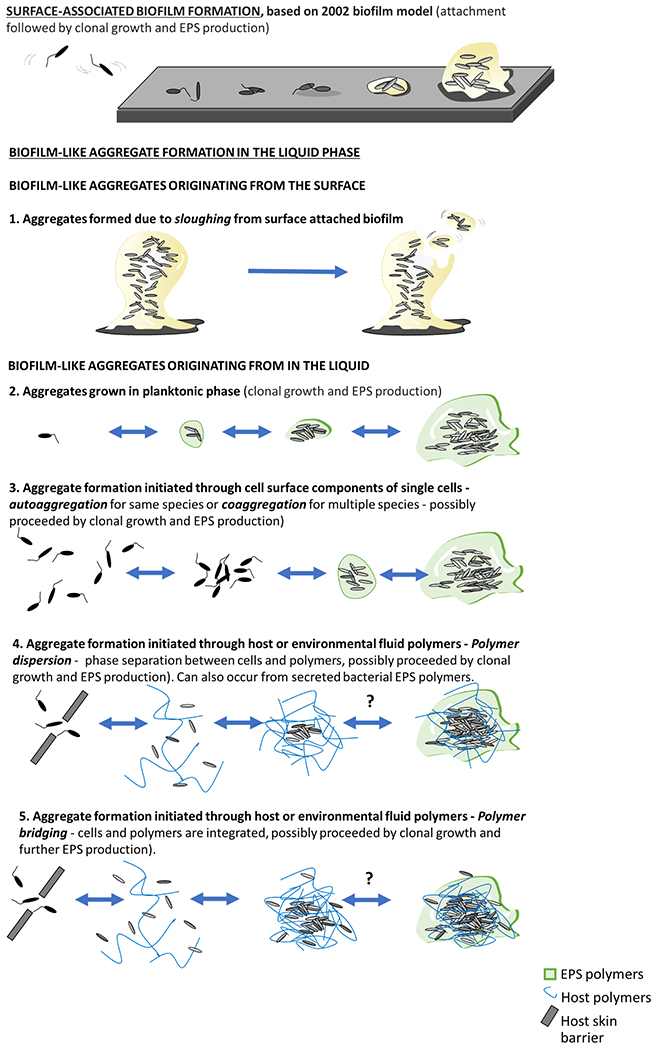Figure 4.

Microbial aggregate formation mechanisms. The top panel shows the “standard” model for biofilm formation starting from the attachment of single planktonic cells to a smooth surface followed by cell division and production of EPS to form 3D surface attached aggregate structures. Below are different mechanisms for generating free floating biofilm-like aggregates. The first is detachment of aggregates from attached biofilms. The second is from clonal growth (division) in the liquid, which may occur with or without facilitation by bacterially produced EPS matrices The third is aggregation of individual cells in a process called autoaggregation for a single species or coaggregation for multiple species, in which bacteria attach to each other through mutual attraction of surface molecules such as adhesins or EPS bridging interactions. The fourth is bridging aggregation which can also be mediated by host polymers, as appears to be the case in synovial fluid (140). Another mechanism of aggregation, the fifth,, is “polymer depletion aggregation” when bacteria are in the presence of non-absorbing polymers (141) and is due to entropic ordering of the colloidal system. Polymer depletion aggregation can be facilitated through bacterially produced EPS or host derived polymers (136).
